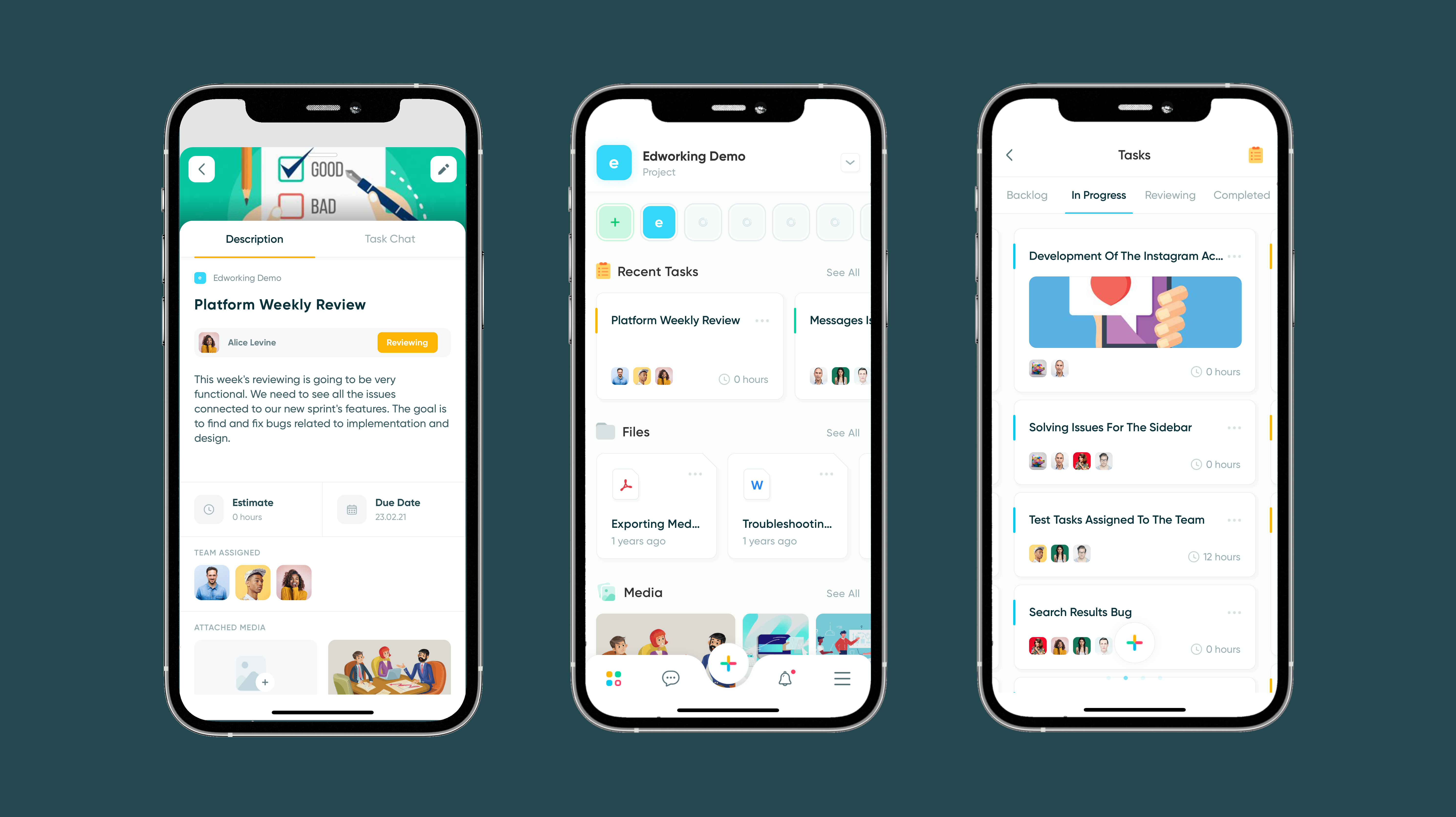In the fast-paced world of business and technology, resource utilization emerges as a key player in the success and efficiency of projects and organizations. But what exactly does this term mean? Essentially, resource utilization involves the effective and efficient deployment of an organization's resources, be it human, financial, or material, to maximize output and minimize waste. In this article, we'll delve into the myriad benefits of optimal resource utilization, explore various strategies to achieve it, and discuss methods to accurately calculate and monitor it. Whether you're a seasoned manager or just starting out, understanding and implementing these concepts can revolutionize your approach to resource management.
 The Benefits of Efficient Resource Utilization
The Benefits of Efficient Resource Utilization

Maximizing Output While Minimizing Costs
Efficient resource utilization is akin to striking gold in the business world. By effectively deploying resources, companies can achieve maximum output with minimal input, leading to significant cost savings. Imagine a scenario where every employee is utilized to their full potential, machinery operates at peak efficiency, and financial resources are allocated strategically. The result? A dramatic increase in productivity and a substantial reduction in unnecessary expenses.
Enhancing Organizational Flexibility and Responsiveness
Another compelling benefit of optimal resource utilization is the enhanced organizational flexibility and responsiveness it fosters. In a dynamic business environment, the ability to quickly adapt to changing circumstances is invaluable. Efficient resource utilization equips organizations with the agility to pivot and respond to market changes, customer demands, and technological advancements swiftly and effectively.
Improving Employee Satisfaction and Retention
Did you know that efficient resource utilization can also lead to happier employees? When resources are managed well, employees are less likely to experience burnout and more likely to feel valued and engaged. This not only improves job satisfaction but also boosts retention rates. A well-oiled machine not only runs smoothly but also keeps its parts – in this case, employees – in good working condition.
Sustainable Business Practices and Reduced Environmental Impact
In today's world, where sustainability is increasingly becoming a priority, efficient resource utilization plays a pivotal role. By optimizing the use of resources, businesses can significantly reduce their environmental footprint. This is not just good for the planet; it's also good for the company's image and bottom line, as consumers are more inclined to support businesses that are environmentally responsible.
 Strategies for Effective Resource Utilization
Strategies for Effective Resource Utilization

Strategic Planning and Forecasting
At the heart of effective resource utilization lies strategic planning and forecasting. This involves understanding the scope of upcoming projects, predicting resource needs, and planning accordingly. It's like being a chess master, anticipating moves before they happen. This can include assessing current resource capabilities, predicting future demands, and aligning resources with organizational goals. By doing so, businesses can avoid resource shortages or excesses, ensuring that every asset is put to its best use.
Technology Integration for Resource Management
In today's digital age, technology plays a crucial role in optimizing resource utilization. Various tools and software solutions exist that can aid in resource planning, tracking, and analysis. For instance, project management software can help in allocating tasks based on employee skills and availability, while analytical tools can provide insights into resource usage patterns and inefficiencies. The main difference between these tools and traditional methods is the ability to provide real-time data and predictive analytics, making resource management more dynamic and precise.
Cross-Functional Teams and Collaborative Work Environments
Creating cross-functional teams and fostering a collaborative work environment is another effective strategy. By doing so, organizations can pool diverse skills and perspectives, leading to more innovative and efficient use of resources. This approach not only maximizes the potential of each team member but also encourages knowledge sharing and reduces redundancy in tasks.
Continuous Training and Skill Development
Investing in continuous training and skill development of employees is a strategy that often pays dividends in terms of resource utilization. By enhancing the skills of your workforce, you increase their efficiency and ability to handle diverse tasks. This not only improves resource allocation but also contributes to employee satisfaction and retention, as employees value opportunities for growth and development.

 Calculating and Monitoring Resource Utilization
Calculating and Monitoring Resource Utilization

Key Metrics for Resource Utilization
When it comes to calculating and monitoring resource utilization, several key metrics come into play. These include utilization rate, which measures the percentage of time resources are used compared to their availability; efficiency rate, which looks at the output produced relative to the resources used; and return on investment (ROI), which assesses the profitability of resource usage. Tracking these metrics can provide valuable insights into how well resources are being utilized and where improvements can be made.
Tools and Techniques for Measurement
To accurately measure resource utilization, various tools and techniques can be employed. Time tracking software, for instance, can be invaluable in measuring the utilization rate of human resources. Similarly, financial management tools can help in assessing the ROI of financial resources. The main difference between these tools and manual methods is the precision and ease they bring to the process, allowing for more accurate and timely analysis.
Regular Reviews and Adjustments
It's not enough to just measure resource utilization; regular reviews and adjustments are also crucial. This involves periodically assessing how resources are being used and making necessary changes to optimize their usage. Think of it as a feedback loop, where the outcomes of resource utilization are continuously monitored and used to inform future decisions and strategies.
Benchmarking Against Industry Standards
Finally, benchmarking against industry standards can provide valuable insights into resource utilization. By comparing your resource utilization metrics with those of other companies in your industry, you can identify areas where you're excelling or lagging behind. This can help in setting realistic goals and adopting best practices for optimal resource utilization.
 Resource Utilization in the Context of Remote Work and Digital Tools
Resource Utilization in the Context of Remote Work and Digital Tools

Adapting Resource Management to a Remote Work Environment
The shift towards remote work has dramatically transformed how we think about resource utilization. In this new landscape, the focus is on maximizing the potential of digital resources and remote human capital. Adapting to this change means rethinking strategies to ensure resources are not just available, but also accessible and efficiently used in a remote setting. It involves leveraging technology to bridge the physical gap, ensuring that team members have what they need to be productive, regardless of their location.
Utilizing Digital Tools for Enhanced Resource Management
The role of digital tools in resource management has become more pronounced in remote work scenarios. Tools like cloud-based project management software, virtual collaboration platforms, and online resource tracking systems are pivotal in maintaining visibility and control over resources. These tools not only facilitate seamless communication and collaboration but also provide real-time data on resource utilization, making remote management more effective and less daunting.
Challenges of Resource Utilization in Remote Settings
While the benefits are numerous, remote work also brings unique challenges in terms of resource utilization. Issues such as time zone differences, digital communication barriers, and the lack of physical oversight can lead to inefficiencies if not properly managed. It requires a proactive approach and the adoption of best practices in remote management to ensure that resources are used optimally in a distributed environment.
Best Practices for Remote Resource Utilization
To combat these challenges, implementing best practices for remote resource utilization is key. This includes regular check-ins, clear communication of expectations, use of collaborative tools, and fostering a culture of trust and accountability. By adopting these practices, organizations can ensure that their resources are being utilized effectively, even in a remote setting.
 Tying It All Together with Edworking
Tying It All Together with Edworking
Before we conclude, let's tie these concepts to Edworking, a tool that exemplifies efficient resource utilization in today's digital and remote work era. Edworking offers a suite of features that streamline project management, enhance team collaboration, and optimize resource allocation. With its robust project tracking capabilities, seamless integration with other tools, and flexible pricing plans, Edworking stands out as a valuable asset for any organization looking to maximize its resource utilization in a remote work context.

 Conclusion
Conclusion
In wrapping up our exploration of resource utilization, it's clear that this concept is more than just a business buzzword; it's a critical component of organizational success. By maximizing the potential of available resources – whether they're human, financial, or material – businesses can achieve greater efficiency, enhance productivity, and foster a more sustainable and adaptable environment.
The journey to effective resource utilization is multifaceted. It involves strategic planning, the adoption of cutting-edge digital tools, and an ongoing commitment to measurement and improvement. In the context of today’s increasingly remote workforce, this journey also requires adapting traditional practices to fit a digital and distributed world. Tools like Edworking provide an excellent example of how modern technology can facilitate this adaptation, offering features that cater to the unique needs of remote resource management.
In practice, efficient resource utilization can be the difference between a thriving business and one that struggles to keep pace. It's about doing more with less, being agile in the face of change, and always seeking ways to improve. Remember, it’s not just about having resources; it's about how effectively you use them.
As we conclude, consider how you can apply these insights to your organization. Whether it's through adopting new technologies, refining your planning processes, or simply reassessing how you measure resource efficiency, there's always room for improvement. And for those looking to sharpen their skills further, tools like the free Edworking online Management Aptitude Test can offer valuable insights into your management style and capabilities.
Embrace the journey of optimizing your resource utilization. It’s a path that leads to not just better business outcomes but also a more dynamic, responsive, and sustainable organizational model. The future of efficient resource management is now, and it's up to us to seize its potential.





